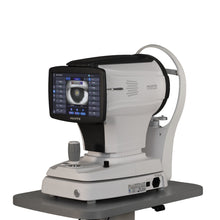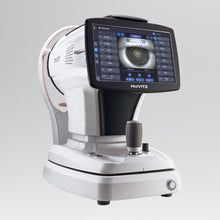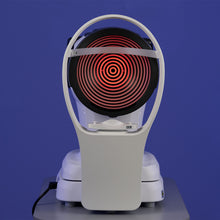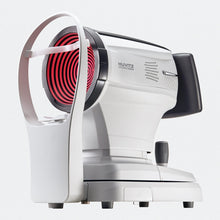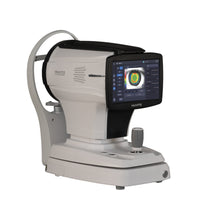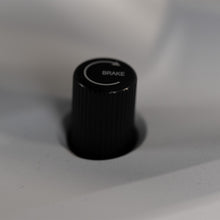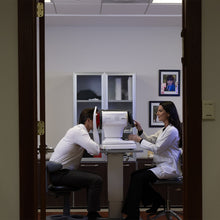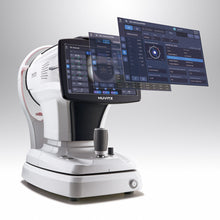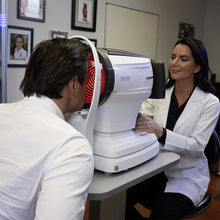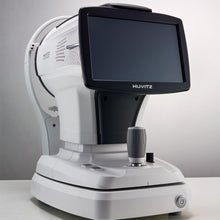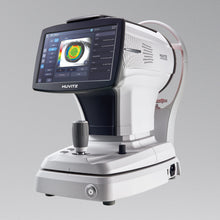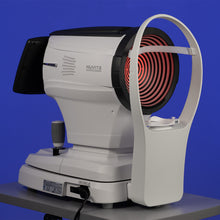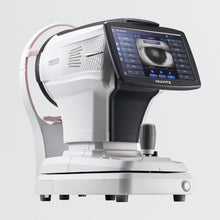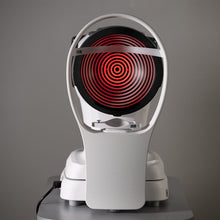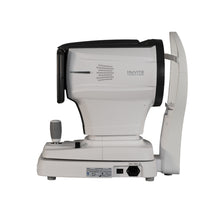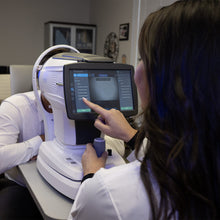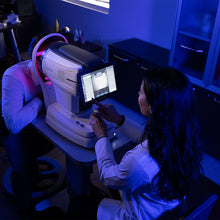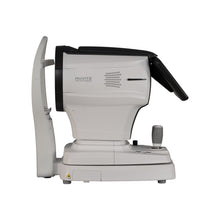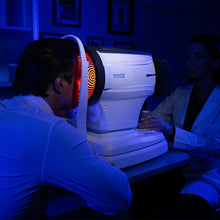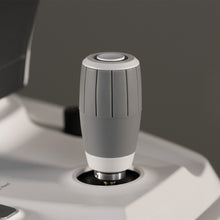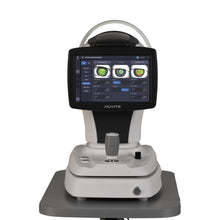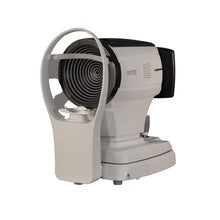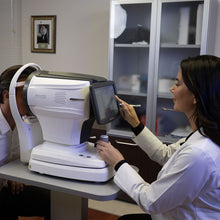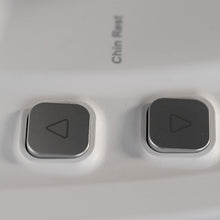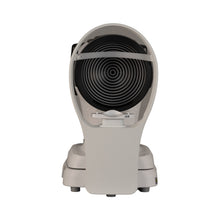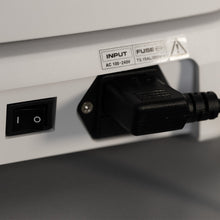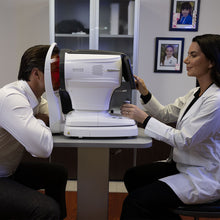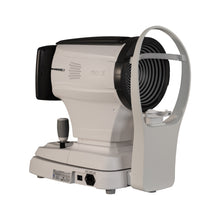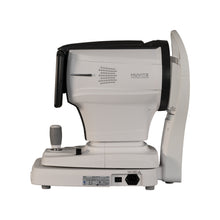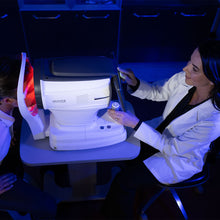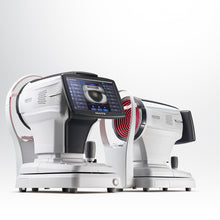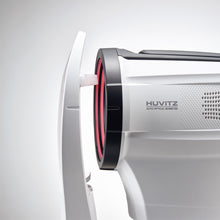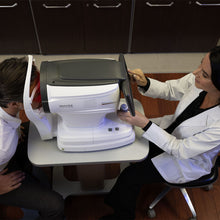Huvitz Biometer HBM-1
The Huvitz Optical Biometer HBM-1 is a cutting-edge device designed for precise biometric measurements of ocular structures. This advanced tool seamlessly integrates optical biometry and corneal topography, offering a comprehensive solution for eye care professionals. With its incorporation of fundamental corneal topography functions for capturing keratorefractive parameters, the HBM-1 is a versatile device.
Running on the Windows 10 Operating System, the HBM-1's software supports widely recognized formulae like Holladay 1, Haigis, Hoffer Q, SRK/T, SRK II, Camellin-Calossi, and Shammas No history. These formulae enable accurate calculations for various applications, including IOL (Intraocular Lens) calculation, IOL toric calculation, post-LASIK (Laser-Assisted In Situ Keratomileusis) calculation, and cataract operations. The Huvitz Optical Biometer HBM-1 is an indispensable tool for eye care professionals seeking precision and efficiency in their practice.
The HBM-1 is the perfect combination for cataract surgery. It allows the user to calculate IOL power in cataract surgery patients by being completely integrated with Biometry and Topography. It offers a range of formulas, including DCM (Dense Cataract Mode), and Placido disc analytics technologies, ensuring more reliable results. Additionally, it measures 10 clinical parameters faster and more accurately.
Achieve the most efficient workflow for cataract surgery by simultaneously measuring 10 optical biometry and complete corneal topography values. Precise calculation of Intraocular Lens (IOL) Power is enhanced by employing a variety of formulas, improving the planning of cataract surgery.
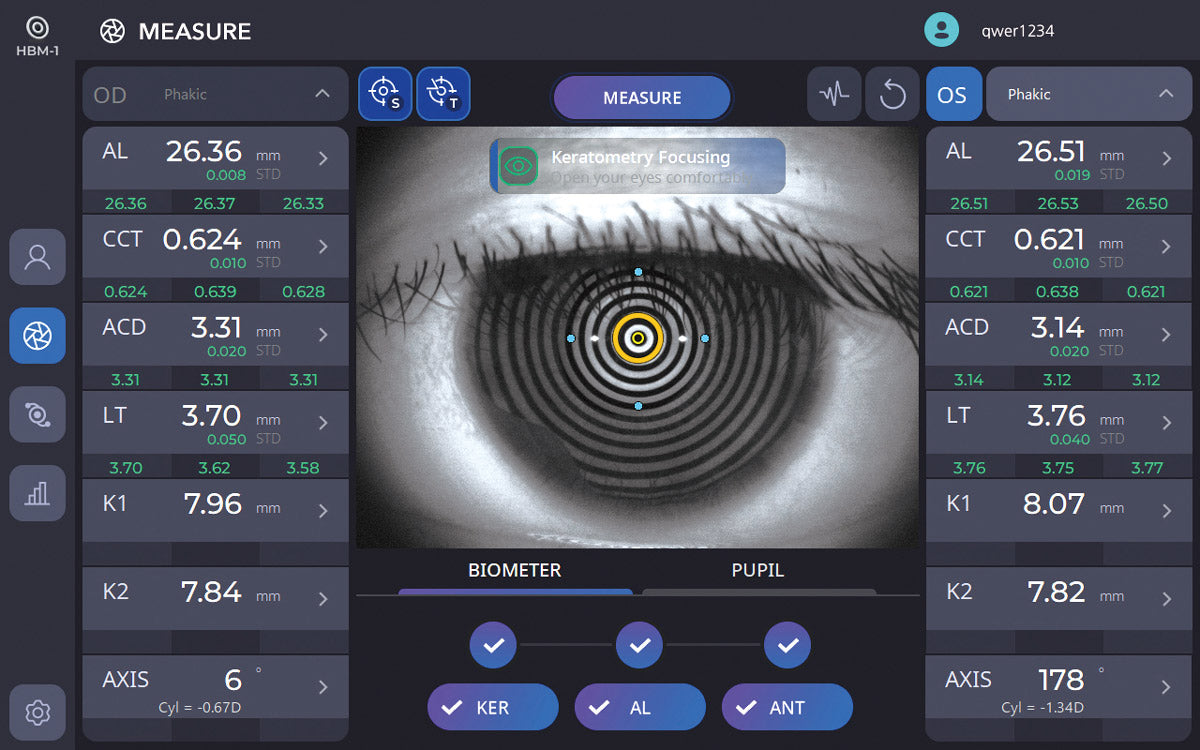
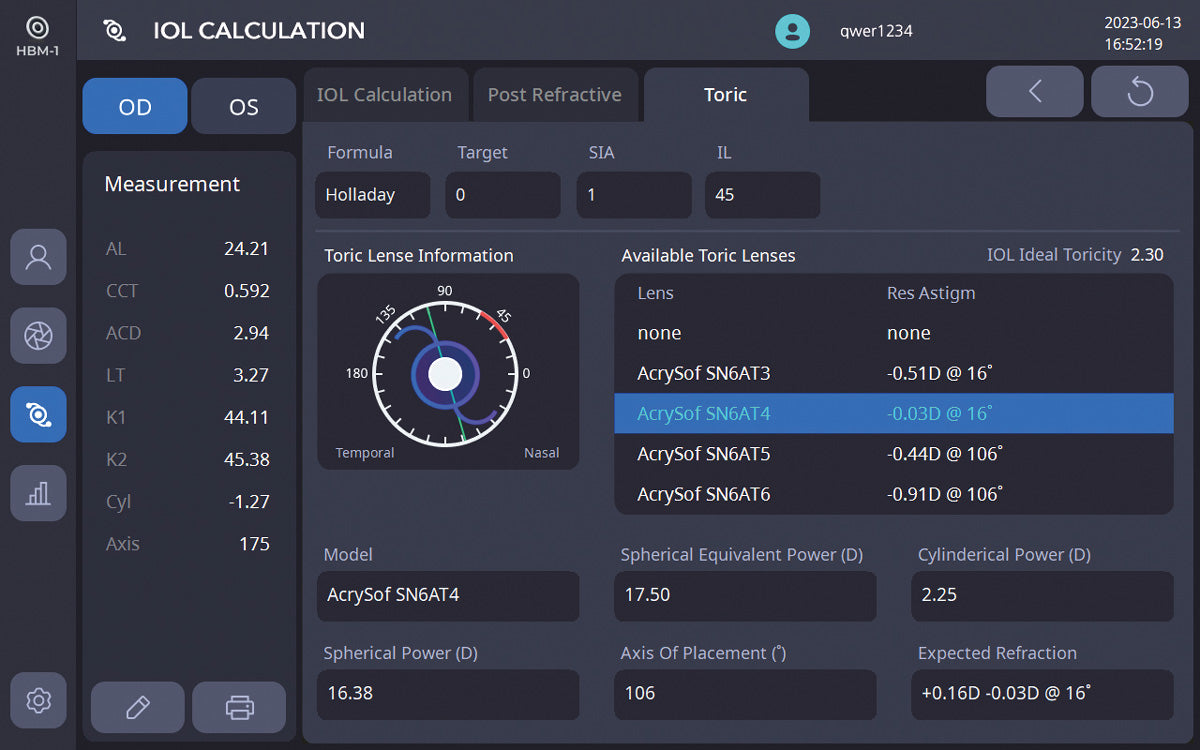
The HBM-1 consistently provides biometry and topography values, ensuring the delivery of dependable data, even in cases with lens opacity in cataract patients. Equipped with Dense Cataract Mode (DCM), the device amplifies and reevaluates weak light signals to secure reliable data for patients with denser cataracts.
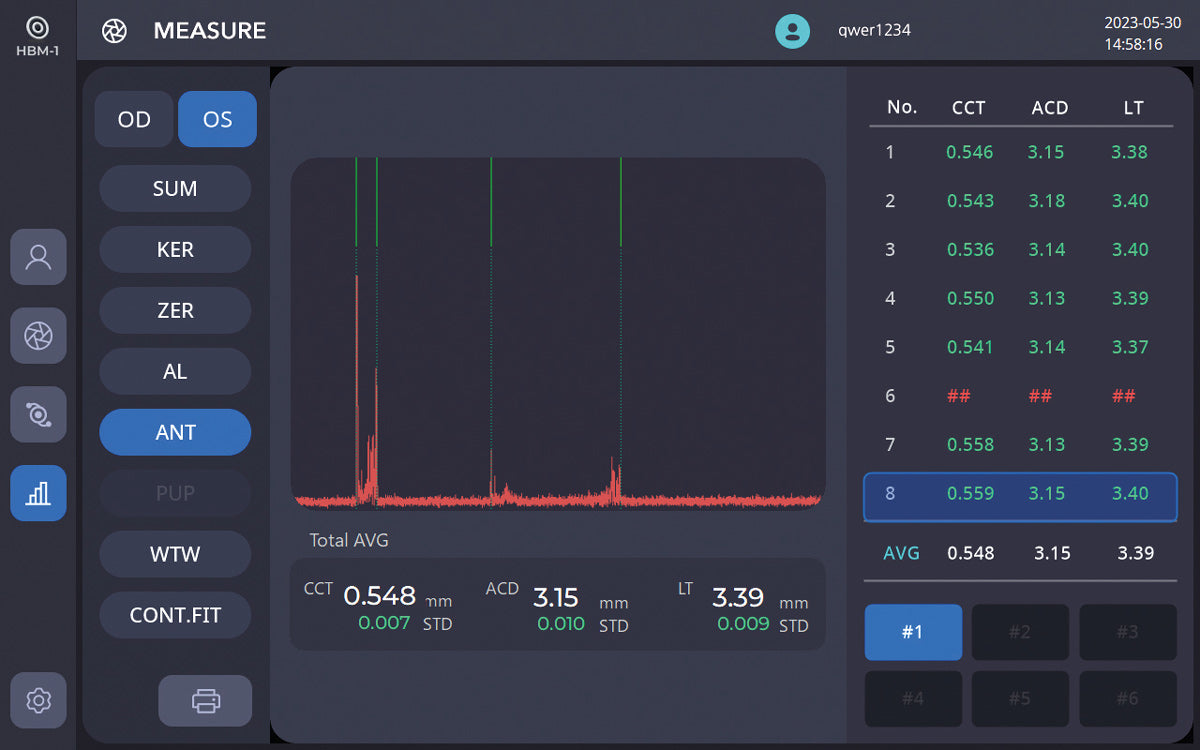

Track changes in patients' visual acuity data, including alterations in axial length (AL) and refraction. It simplifies the comparison of diagnoses derived from eyeglasses and lenses, both before and after prescription, and supports routine eye care management, such as monitoring how floaters affect vision.
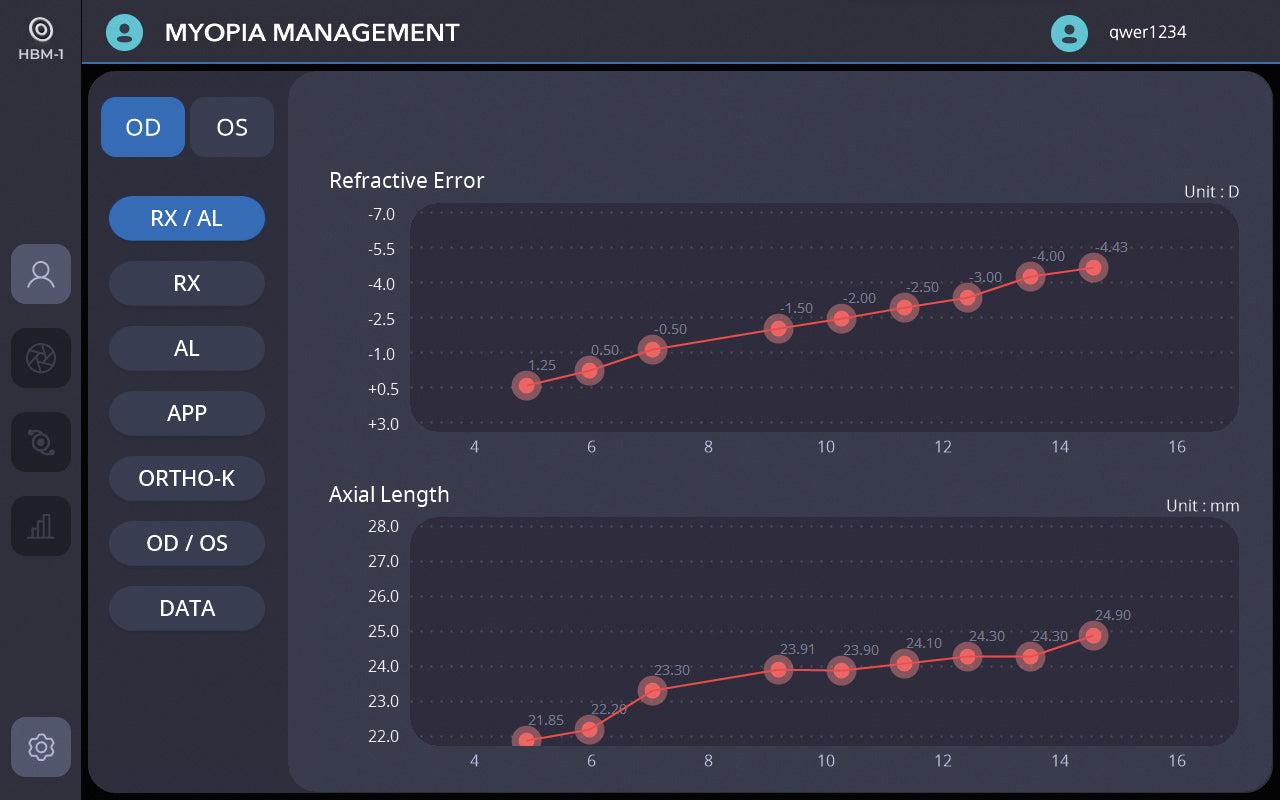

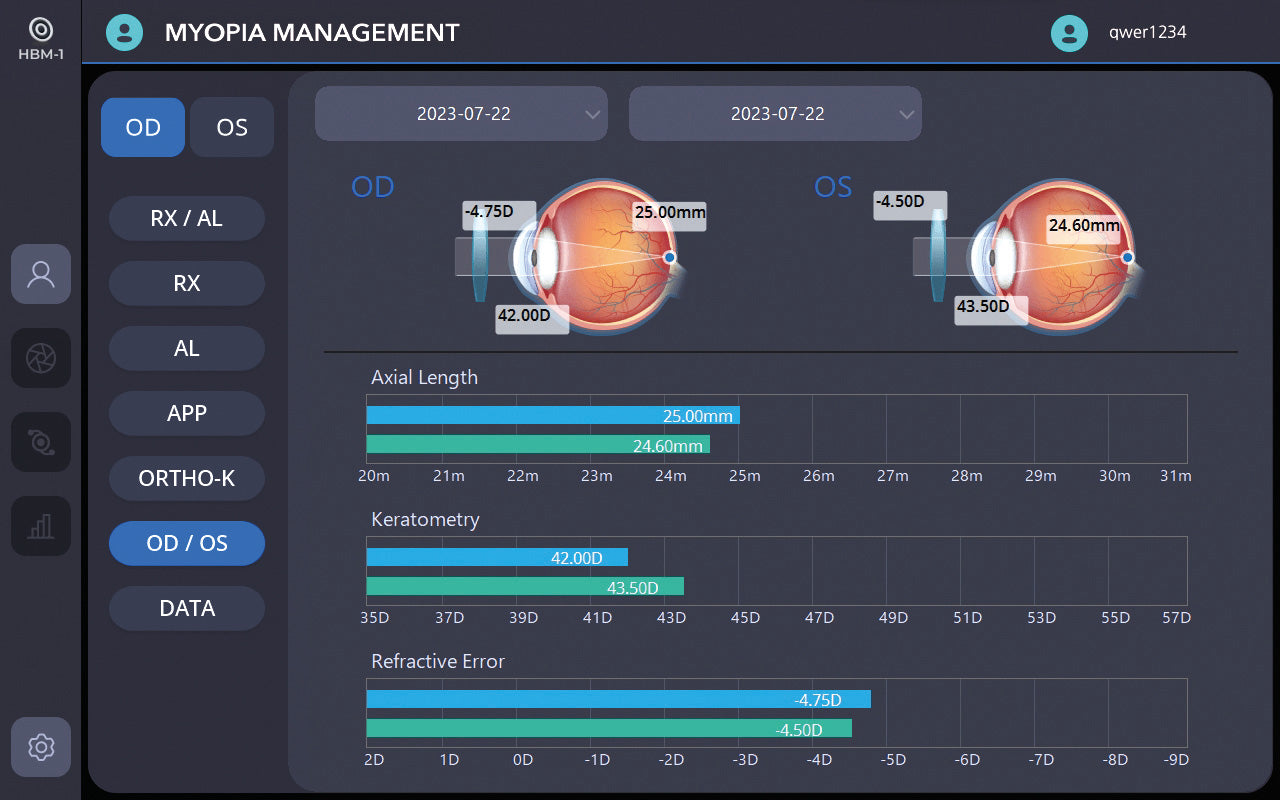
The HBM-1 provides reliable data and cornea information to provide an accurate IOL Power calculation.
OPTIMIZED WORKFLOW FOR CATARACT SURGERY
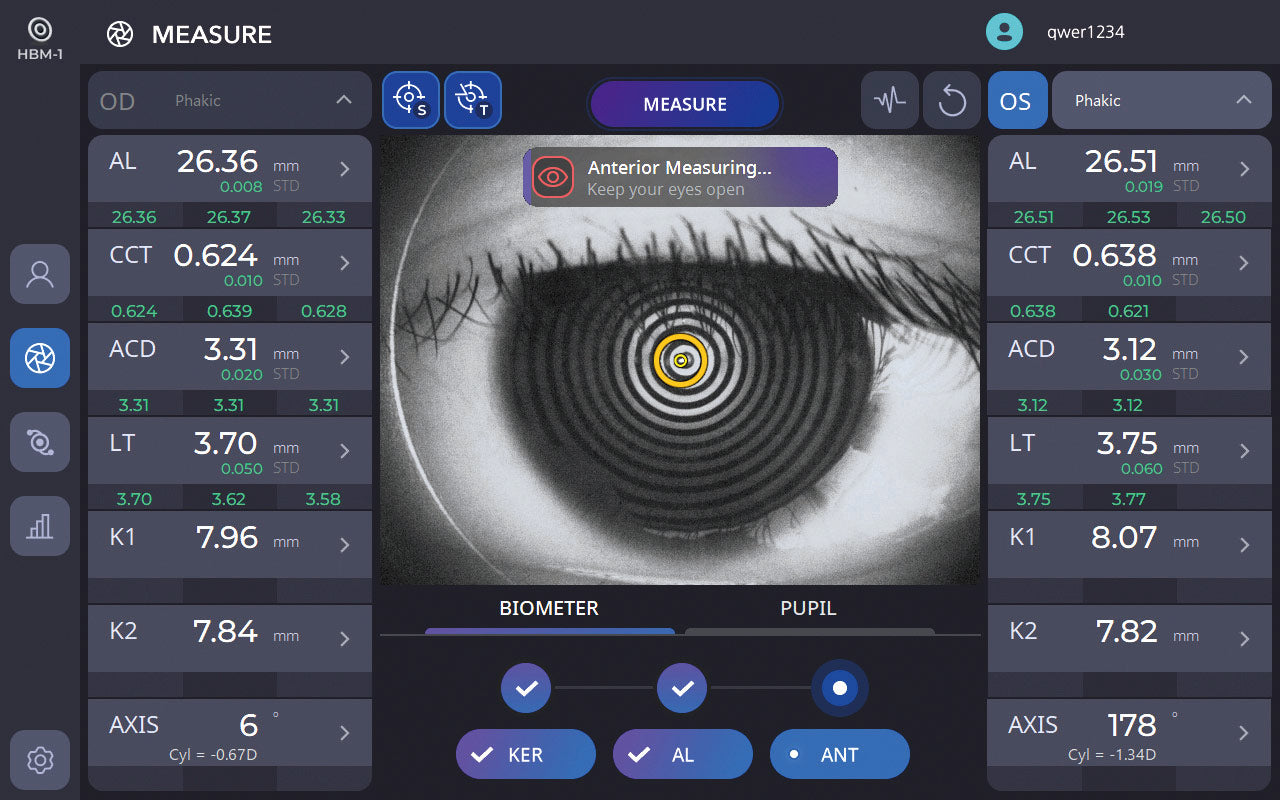
10 types of data for IOL Power calculation.
All accurate result values are based on the NO.6th AL, NO.8th ANT measurement data Standard De-viation(STD).
Fast measurement speed minimizes patient dis-comfort.
10 methods data measurement: Axial Length(AL), Anterior Chamber Depth(ACD), Central Corneal Thickness(CCT), Lens Thickness(LT), Keratometry, Topography, Keratoconus, Zernike Coefficients, Pupillometry, White to white
The measured result value suggests the IOL Power value after calculation through the various Formulas & IOL.
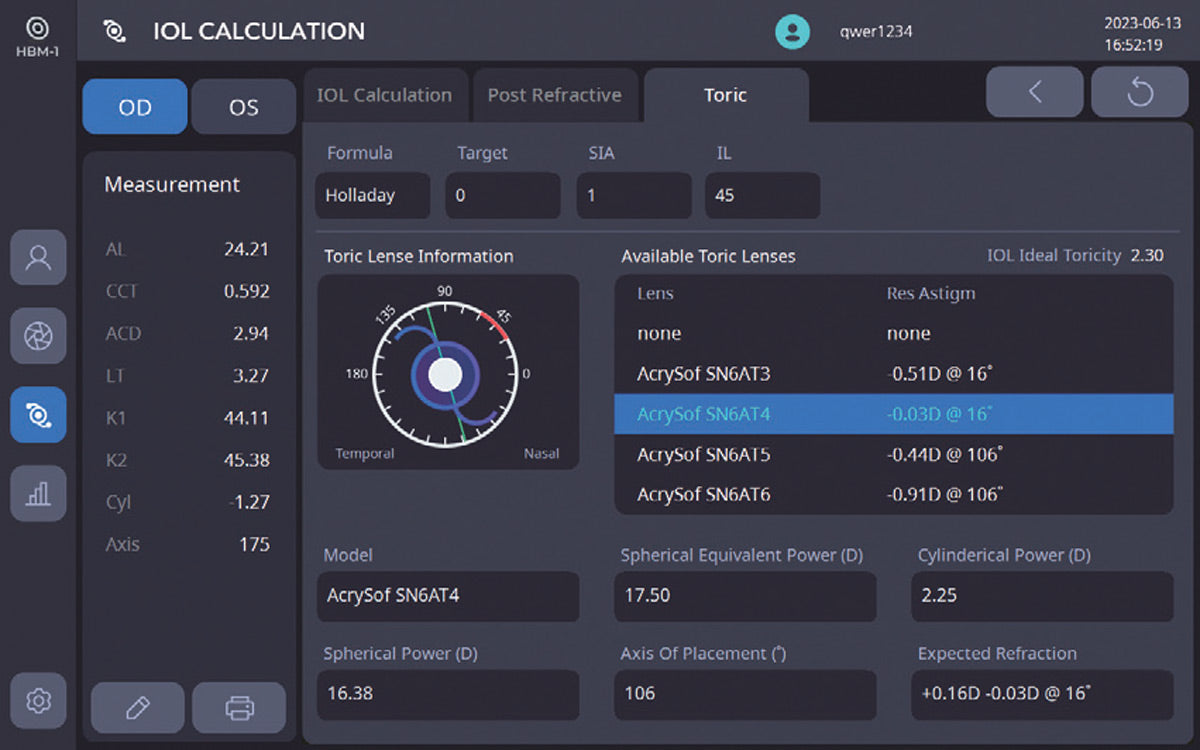
This approach involves prescribing premium lenses that address multiple vision issues simultaneously, including astigmatism, myopia, presbyopia, and cataracts. By offering options such as Toric IOLs for astigmatism correction, multifocal IOLs for presbyopia correction, and Spherical IOLs for improved clarity, patients benefit from comprehensive solutions. Additionally, the guidance provided assists users in making informed decisions to select the most suitable IOL for correcting their specific refractive errors, resulting in enhanced visual outcomes and overall satisfaction.
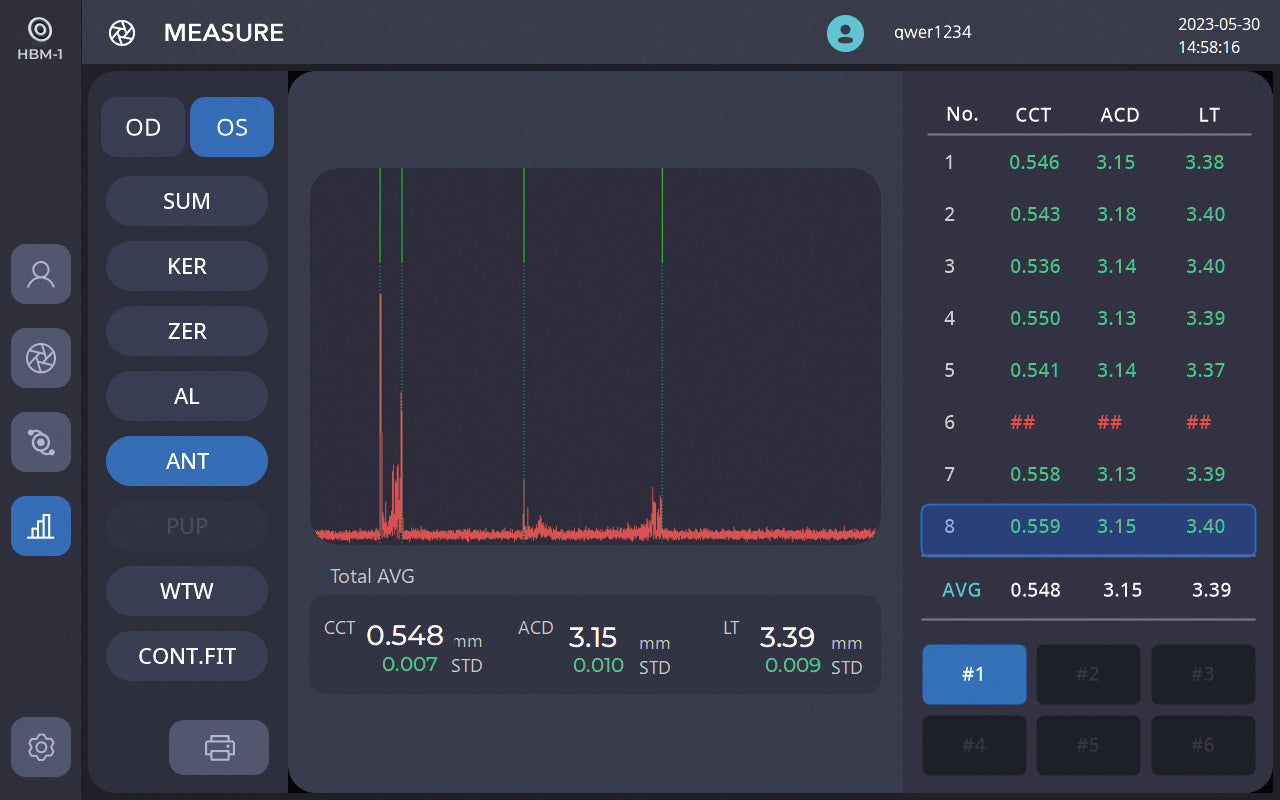
Precisely measuring the biometry values in cataract patients is crucial for accurate assessments. We achieve this by utilizing Verified Light Interference Technology, which guarantees the acquisition of highly reliable data. This technology remains consistent and dependable, unaffected by the diverse skill levels of individual users, ensuring accuracy in biometry measurements for all cataract patients.
Data Measurement: Axial Length(AL), Central Corneal Thickness(CCT), Anterior Chamber Depth(ACD), Lens Thickness(LT)
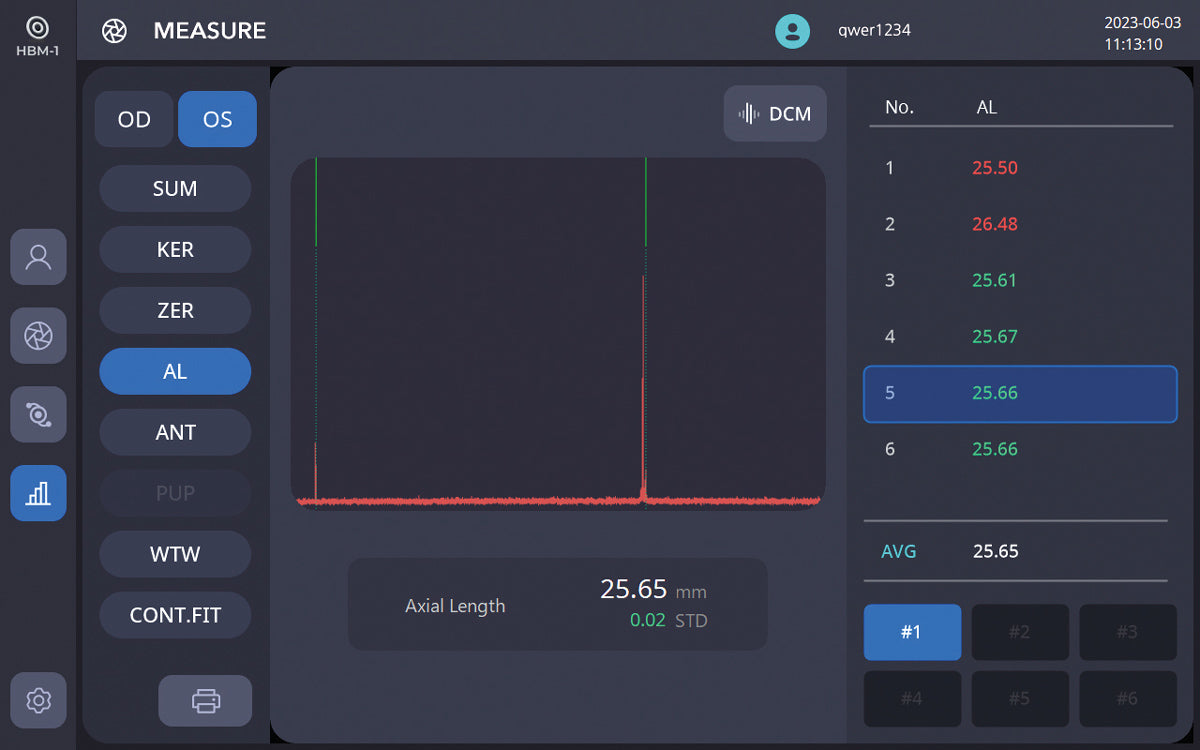
The Dense Cataract Mode (DCM) functionality has been specifically engineered to cater to patients with dense cataracts. It utilizes advanced algorithm-driven technology to enable the measurement of the Axial Length (AL) value with remarkable precision, even in cases that pose significant challenges. This ensures accurate data collection and reliable results for patients with the most complex cataracts.
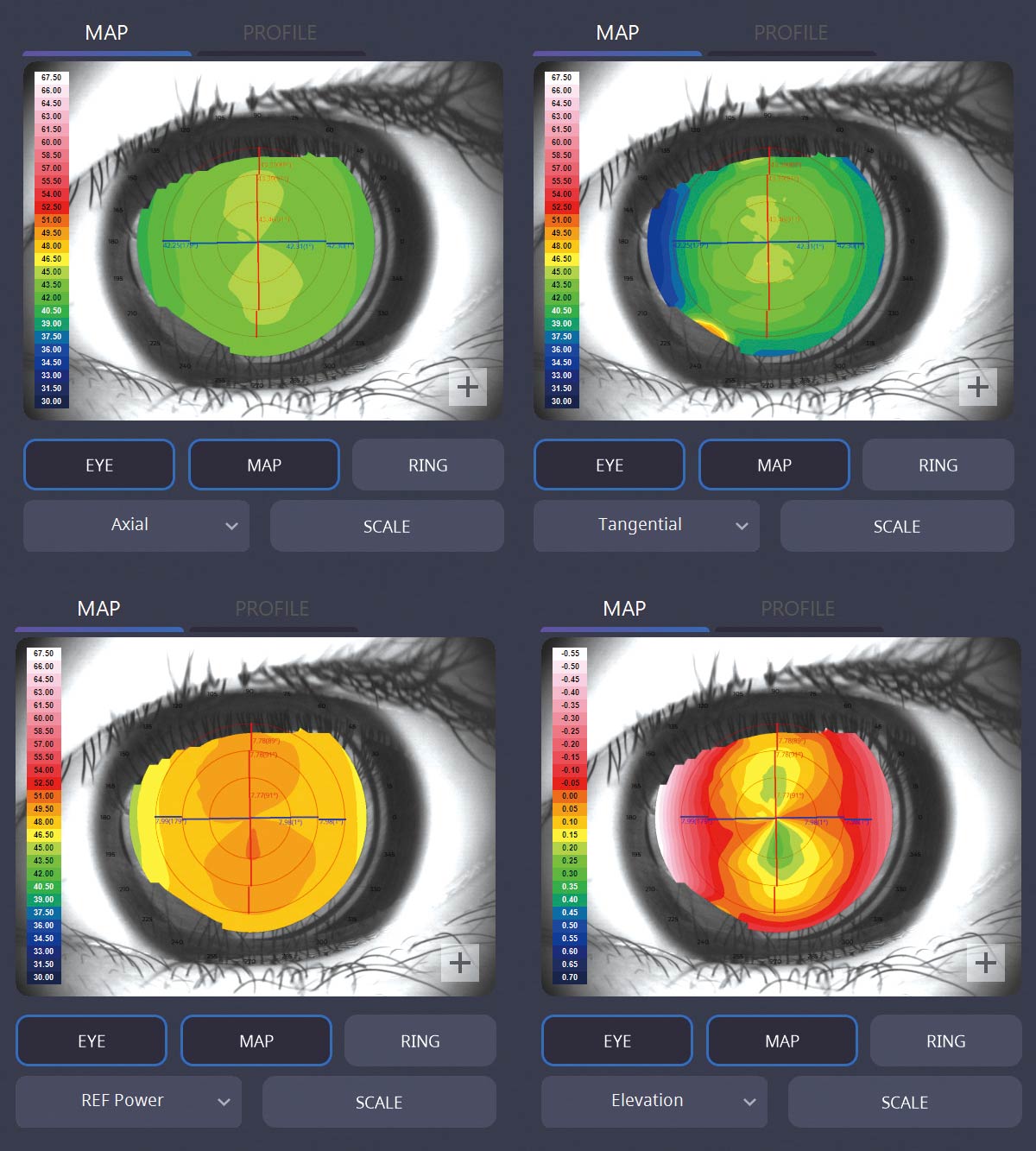
The HBM-1 delivers precise corneal information and K (keratometry) values. It offers meticulous analysis and measurement data encompassing Cornea Axial, Tangential, Refractive Power, and Elevation Map, ensuring comprehensive and accurate assessment of the corneal characteristics essential for various ophthalmic procedures.
Data Measurement: Keratometry, Topography, Keratoconus, Zernike Coefficients, Pupillometry, White to white
WIDE MANAGEMENT 'MONITORING, REGULAR CARE' by HBM-1
The HBM-1 is equipped to meticulously track the complete historical data of a patient's eye measurements, allowing for the generation of graphical representations depicting changes in Axial Length (AL) and refractive values over time. Moreover, it has the capability to integrate REF (RX) data from Huvitz RK series instruments, serving as a valuable foundation for precise diagnostic assessments.
Additionally, the HBM-1 supports patients through their Ortho-K Lenses prescription and surgical processes, enabling a thorough comparison of variations in eye measurements before and after wearing Ortho-K Lenses. This feature also facilitates the observation and discussion of anisometropia with the patient, enhancing the overall patient experience and understanding of their eye health.
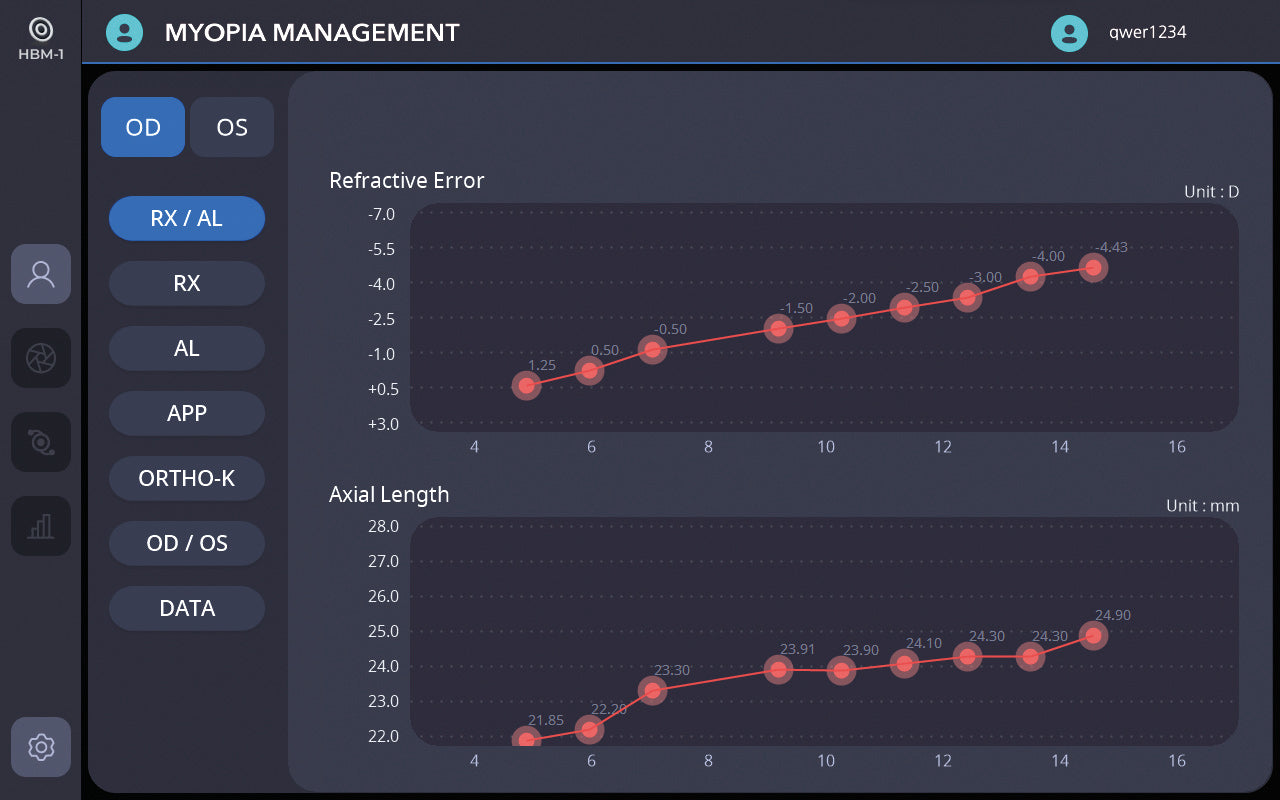
Monitoring the Myopia History Data

Comparison of Changes Before & After Wearing Ortho-K Lenses
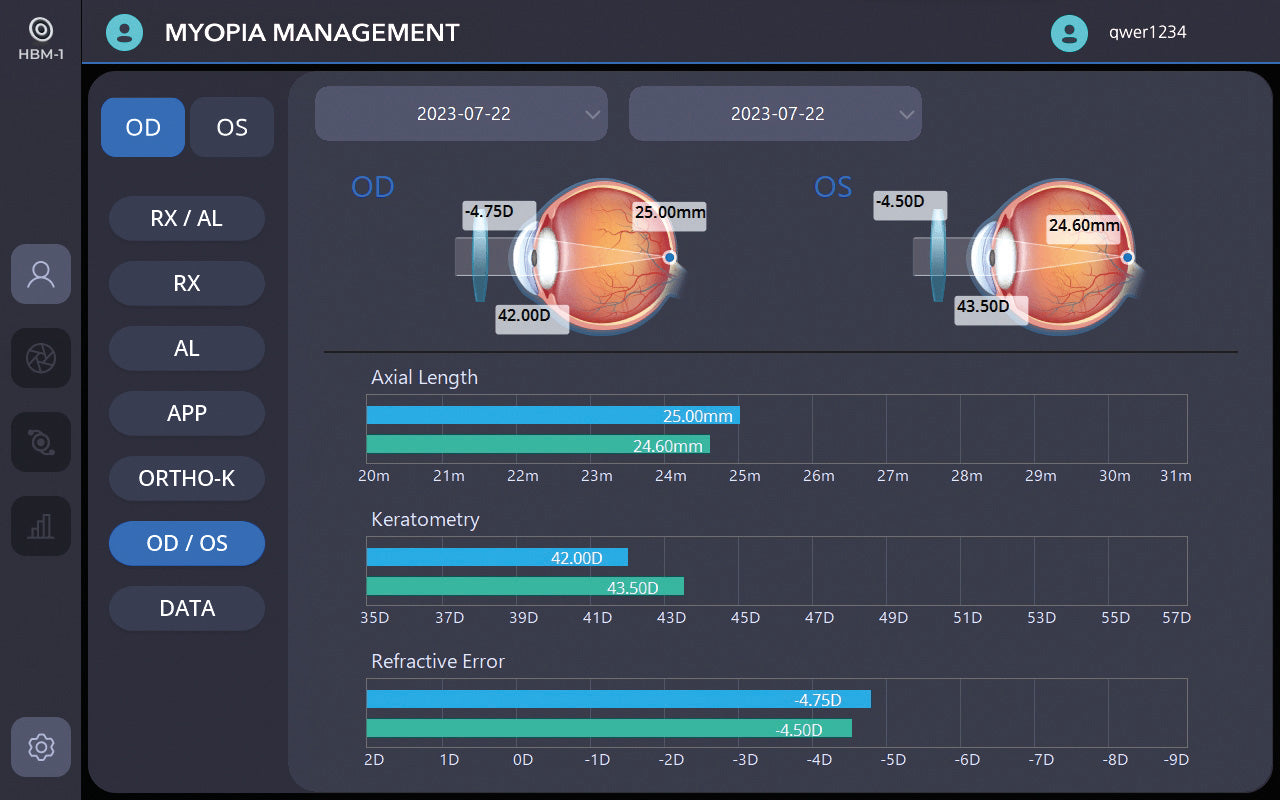
Check Anisometropia
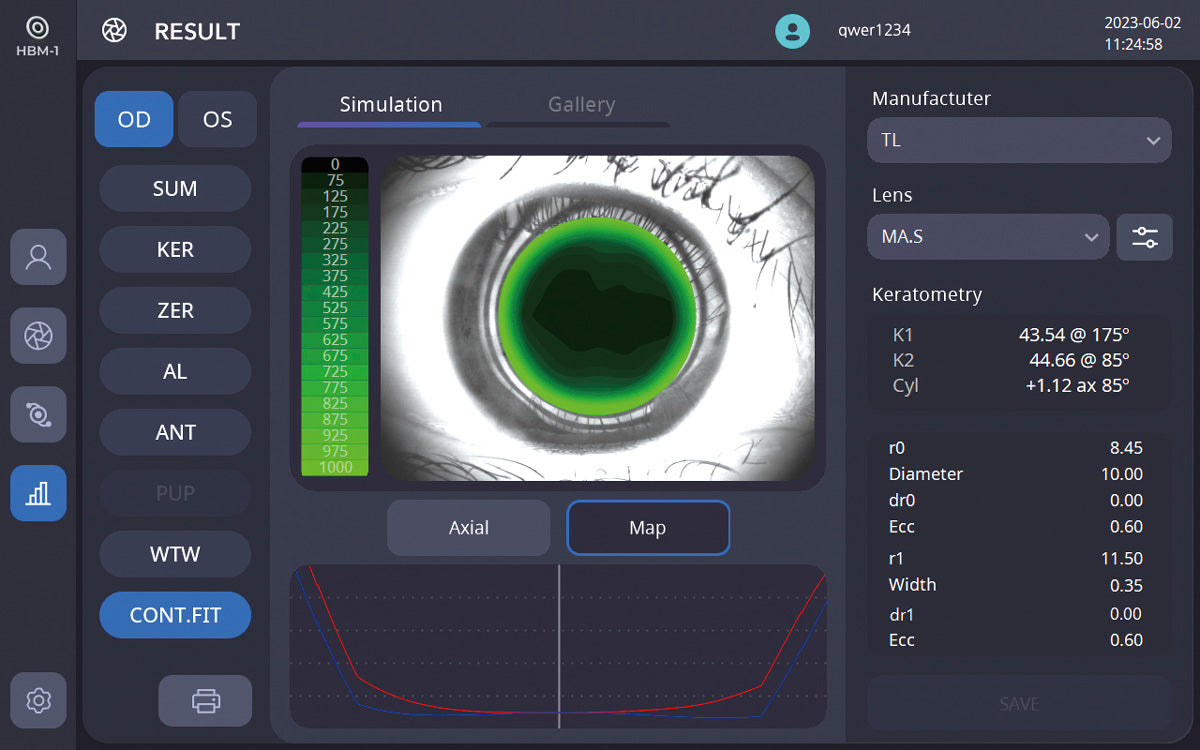
Capture a Fluorescein Image without a direct in-jection with liquid fluorescence.
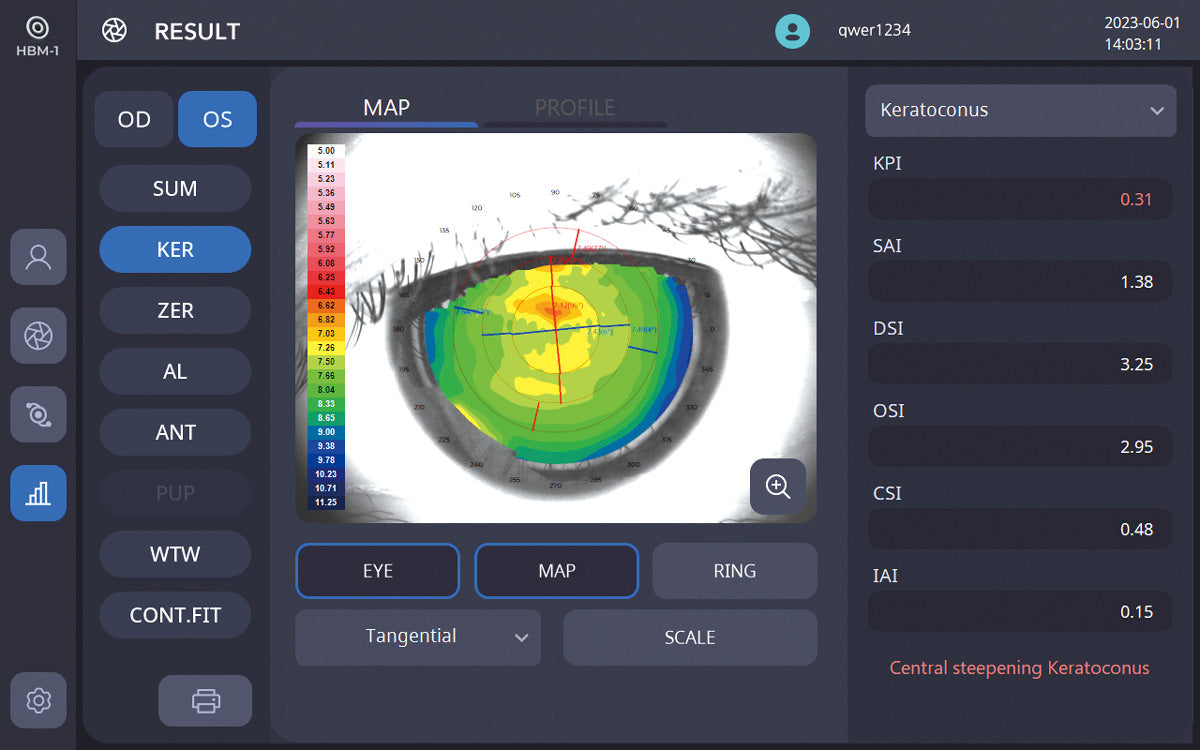
Calculates KPI(Keratoconus Prediction Index) values to predict Keratoconus
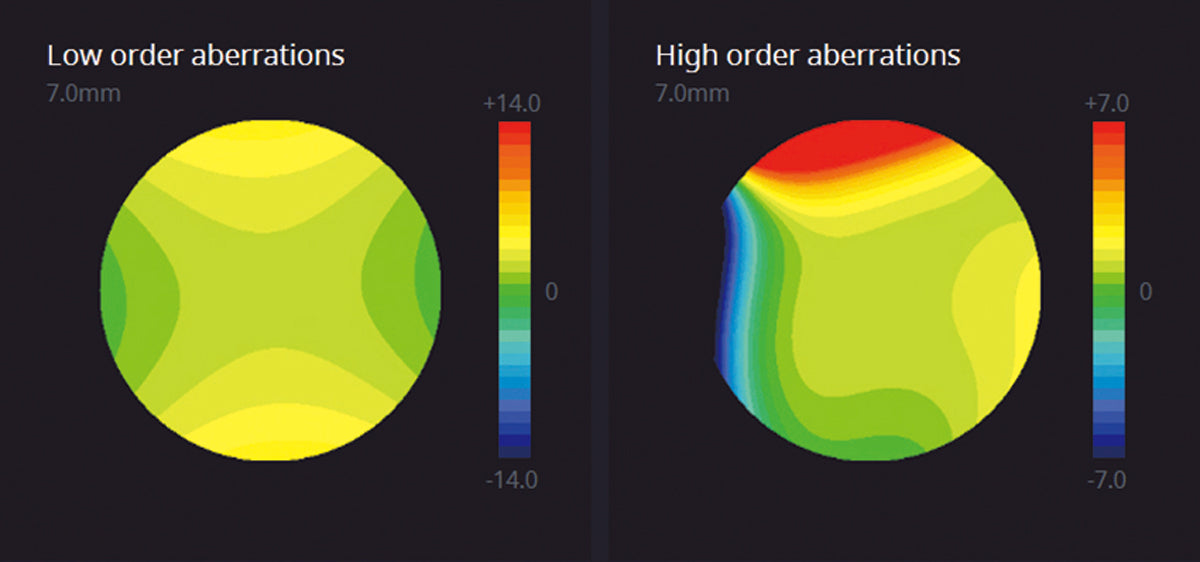
By analyzing Zernike Coefficients/Map, various variables such as eye refractive power variation and irregular astigmatism are systematically ob-tained.
USER-CENTRIC ENVIRONMENT
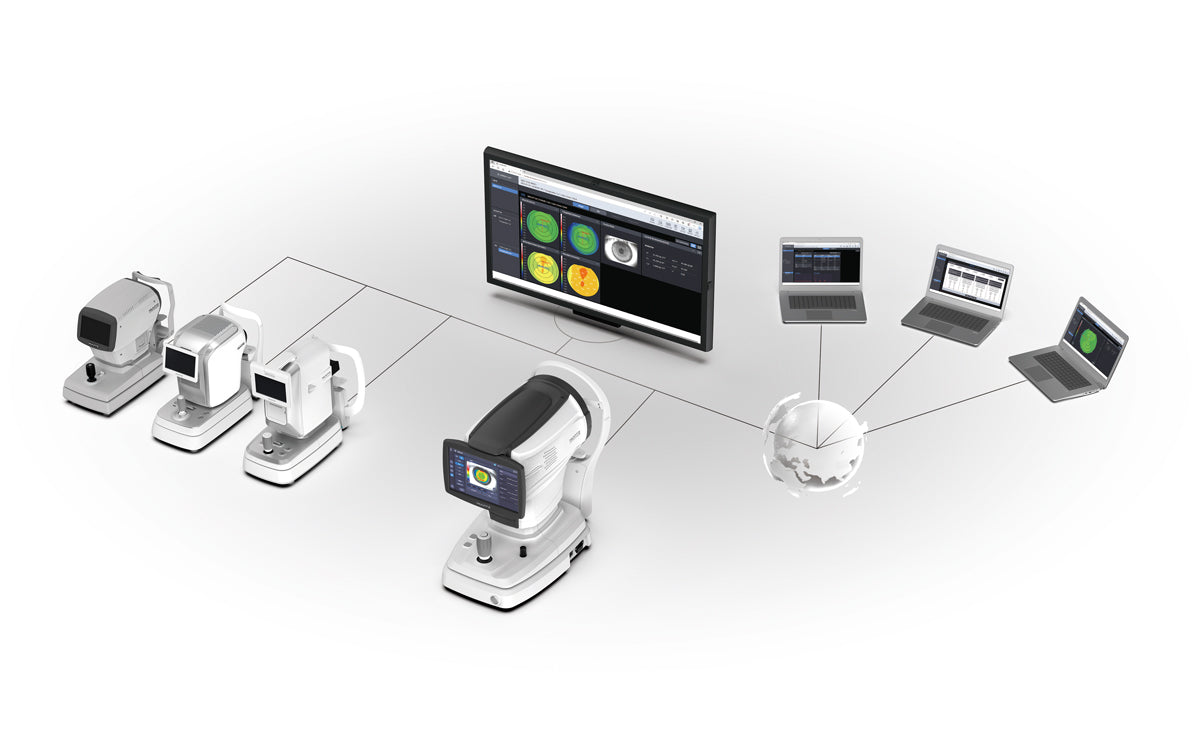
The standard format effortlessly facilitates the connection of each product to DICOM, enabling seamless integration with healthcare information systems. The measured data can then be displayed and analyzed on a personal computer (PC) using the Huvitz HIIS-1 software, ensuring efficient data management and accessibility for healthcare professionals.
∙ A beep sounds (twice) for ending the measurement: Informing the patient to close their eyes
A sound alarm system is implemented to notify the patient when it's time to either "open their eyes" or "close their eyes." This feature is designed to minimize the strain and discomfort experienced by the patient, ensuring a smoother and more comfortable experience during the procedure.
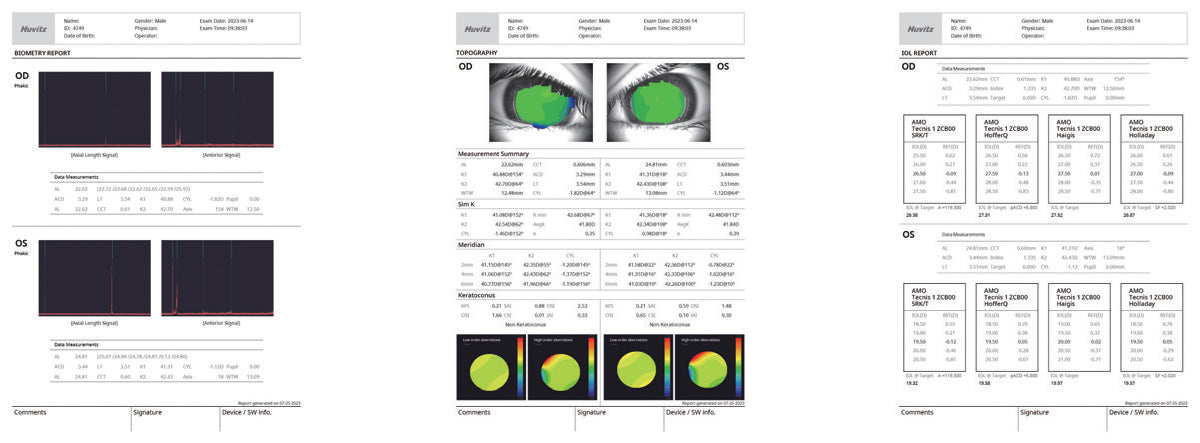
The HBM-1 provides the systematic report based on the IOL Power values in Biometry, Topography and IOL.
Through the Auto Focus Mechanism, the HBM-1 can track the measurement point, easily and pre-cisely, quickly measuring without manual focus. The Auto Tracking guide will help you with direct-ing the Joystick and Chinrest positions.
It conveniently showcases a broad spectrum of information, including measurements and analysis reports, directly on the built-in 10.1-inch touch LCD screen, eliminating the requirement for a separate PC installation.

Click here to see the brochure

Click here to see the manual
| Biometry | ||
| Parameter | Measuring Range | SD of Repeatability |
| Axial Length | 0.55 - 1.58 in (14 – 40 mm) | ±0.0009 in (±0.025 mm) |
| Anterior Chamber Depth | 0.059 - 0.25 in (1.5 – 6.5mm) | ±0.0016 in (±0.04 mm) |
| Central Corneal Thickness | 0.0098 - 0.05 in (0.25 – 1.3mm | ±0.0007 in (±0.02 mm) |
| Crystalline Lens Thickness |
1.5-6.5mm(phakic) 0.5-3.5mm(pseudo-phakic) |
±0.002 in (±0.06 mm) |
| White-to-white Distance | 0.27 - 0.55 in (7 – 14 mm) | ±0.0019 in (±0.05 mm) |
| Pupil Diameter | 0.019 - 0.39 in (0.5 – 10 mm) | ±0.0019 in (±0.05 mm) |
| Keratometry | ||
| Parameter | Measuring Range | SD of Repeatability |
| Corneal Curvature Radius | 0.19 - 0.51 in (5 – 13 mm) | ±0.001 in (±0.03 mm) |
| Cornea Refractive Power |
25.96D ~ 67.50D (Diopter, n = 1.3375) |
- |
| Direction of Principal Meridians |
Measuring range: 1° – 180° Accuracy: according to the ISO 10343:2014 R1-R2≤0.3mm: ±4° R1-R2>0.3mm: ±2° |
- |
| Corneal Topography | |
| Working Distance | 3.14 in (80 mm) |
| Placido Disc | 24 rings |
| Points Analyzed | Over 100,000 |
| Common | |
| Display | Tiltable 10.1 inch, Touch panel color LCD |
| Horizontal Movement | 1.77 in / 45 mm (back and forth), 3.93 in / 100 mm (left and right) |
| Vertical Movement | 1.18 in / 30 mm |
| Chinrest Movement | 2.44 in / 62 mm (up and down), motorized |
| Auto tracking | X,Y for positioning, Z for working distance |
| Power Supply | AC 100 - 240 V, 50/60 Hz, 1.6 - 0.7 A |
| PC | Built in computer |
| Dimension | 11.88(W) x 19.92(D) x 20.07(H) in (302(W) x 506(D) x 510(H) mm) |
| Weight | 48.4 lb (22 kg) |
| Biometry | ||
| Parameter | Measuring Range | SD of Repeatability |
| Axial Length | 0.55 - 1.58 in (14 – 40 mm) | ±0.0009 in (±0.025 mm) |
| Anterior Chamber Depth | 0.059 - 0.25 in (1.5 – 6.5mm) | ±0.0016 in (±0.04 mm) |
| Central Corneal Thickness | 0.0098 - 0.05 in (0.25 – 1.3mm | ±0.0007 in (±0.02 mm) |
| Crystalline Lens Thickness |
1.5-6.5mm(phakic) 0.5-3.5mm(pseudo-phakic) |
±0.002 in (±0.06 mm) |
| White-to-white Distance | 0.27 - 0.55 in (7 – 14 mm) | ±0.0019 in (±0.05 mm) |
| Pupil Diameter | 0.019 - 0.39 in (0.5 – 10 mm) | ±0.0019 in (±0.05 mm) |
| Keratometry | ||
| Parameter | Measuring Range | SD of Repeatability |
| Corneal Curvature Radius | 0.19 - 0.51 in (5 – 13 mm) | ±0.001 in (±0.03 mm) |
| Cornea Refractive Power |
25.96D ~ 67.50D (Diopter, n = 1.3375) |
- |
| Direction of Principal Meridians |
Measuring range: 1° – 180° Accuracy: according to the ISO 10343:2014 R1-R2≤0.3mm: ±4° R1-R2>0.3mm: ±2° |
- |
| Corneal Topography | |
| Working Distance | 3.14 in (80 mm) |
| Placido Disc | 24 rings |
| Points Analyzed | Over 100,000 |
| Common | |
| Display | Tiltable 10.1 inch, Touch panel color LCD |
| Horizontal Movement | 1.77 in / 45 mm (back and forth), 3.93 in / 100 mm (left and right) |
| Vertical Movement | 1.18 in / 30 mm |
| Chinrest Movement | 2.44 in / 62 mm (up and down), motorized |
| Auto tracking | X,Y for positioning, Z for working distance |
| Power Supply | AC 100 - 240 V, 50/60 Hz, 1.6 - 0.7 A |
| PC | Built in computer |
| Dimension | 11.88(W) x 19.92(D) x 20.07(H) in (302(W) x 506(D) x 510(H) mm) |
| Weight | 48.4 lb (22 kg) |
Introducing to Optical Biometer HBM-1 Huvitz - Spanish
Step by Step - English
Step by Step - Spanish
Step by Step - Portuguese
Introducing to Optical Biometer HBM-1 Huvitz




































